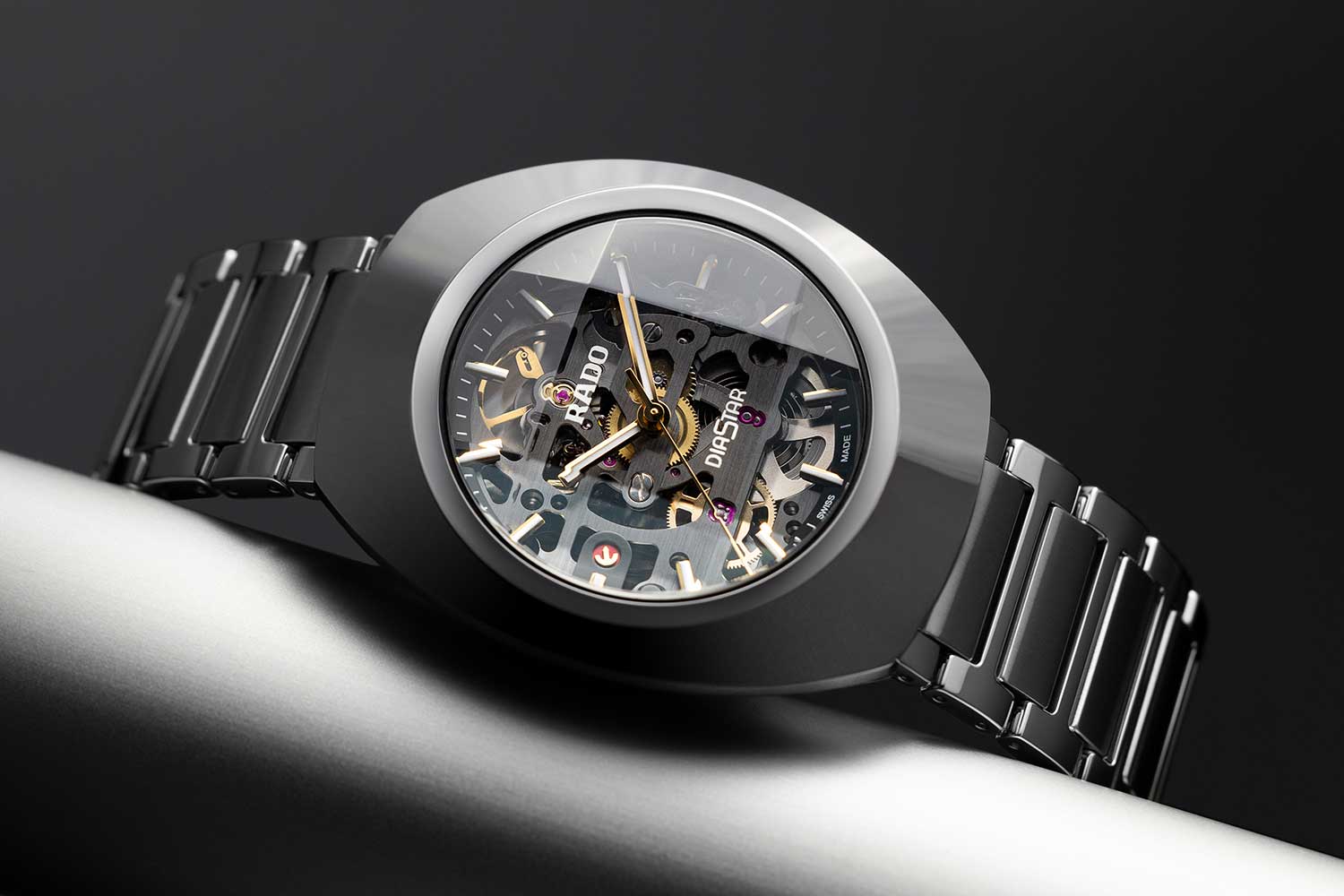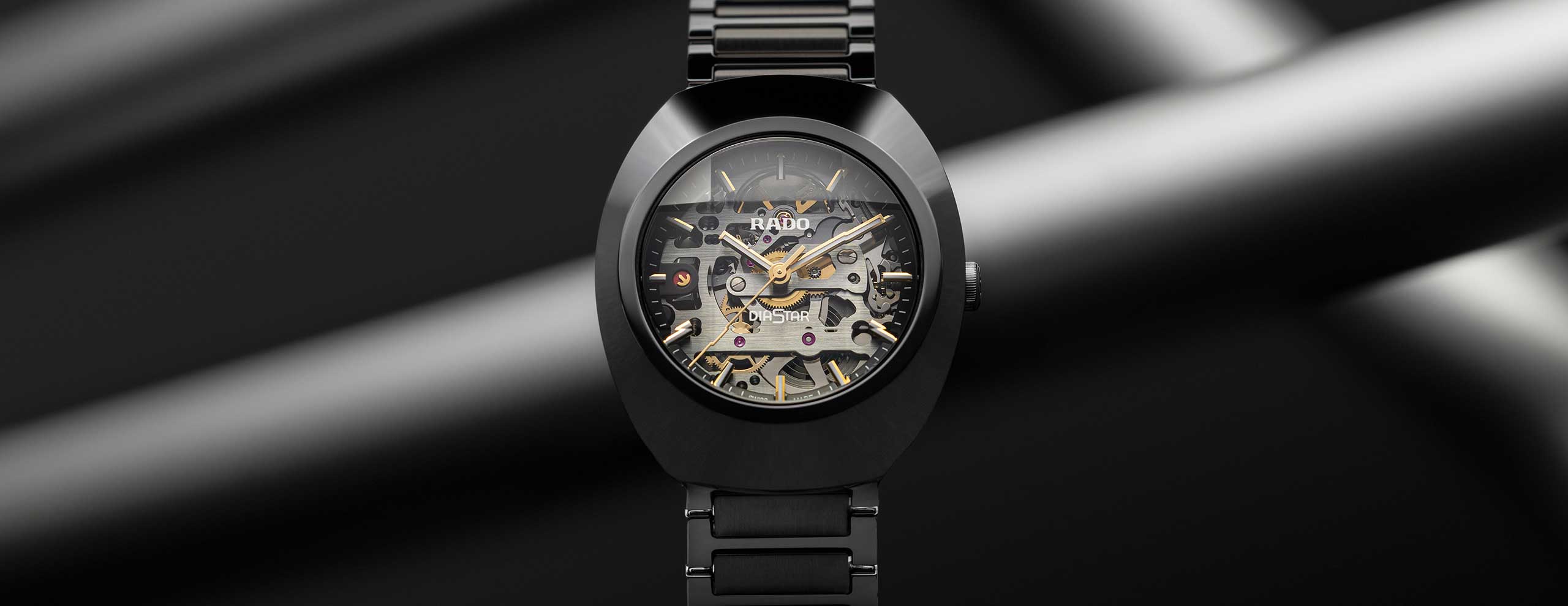For a long time, Rado has been known for its boundary-pushing work with materials, most notably ceramics. One year after the Rado Diastar celebrated its 60th anniversary, the brand is reimagining one of its most arresting pieces with a skeletonized dial wrapped in a Ceramos case.
Nowadays, non-standard materials (which I’m classifying as anything other than steel, gold, or platinum) are commonplace. Ceramics are the norm. Bronze watches seem to be here to stay. Carbon watches are almost old hat by now and sapphire cases, while rarely seen in the wild, are hardly strangers to the inboxes of journalists (trust me) and the wrists of the super-rich.
But one material I have never had the pleasure to encounter is Ceramos, the rather fancy name
Rado has given to its patiently developed injectable form of CERMET.
If that sounded like Greek to you, you’re not alone: thirty years ago in 1993, Rado produced the very first watch made from Sintra — a ceramic/metal alloy. Sintra was a CERMET class alloy (with the name CERMET coming from CERamic and METal combined). This material has its roots in the 1970s and was first developed by tool manufacturers, forced to innovate thanks to a shortage of cobalt, which had previously been essential to their work. CERMET comprises almost 90% titanium carbide (that’s the ceramic bit of the equation) and a metallic binder that brings stiffness and a metallic appearance to the resulting material.
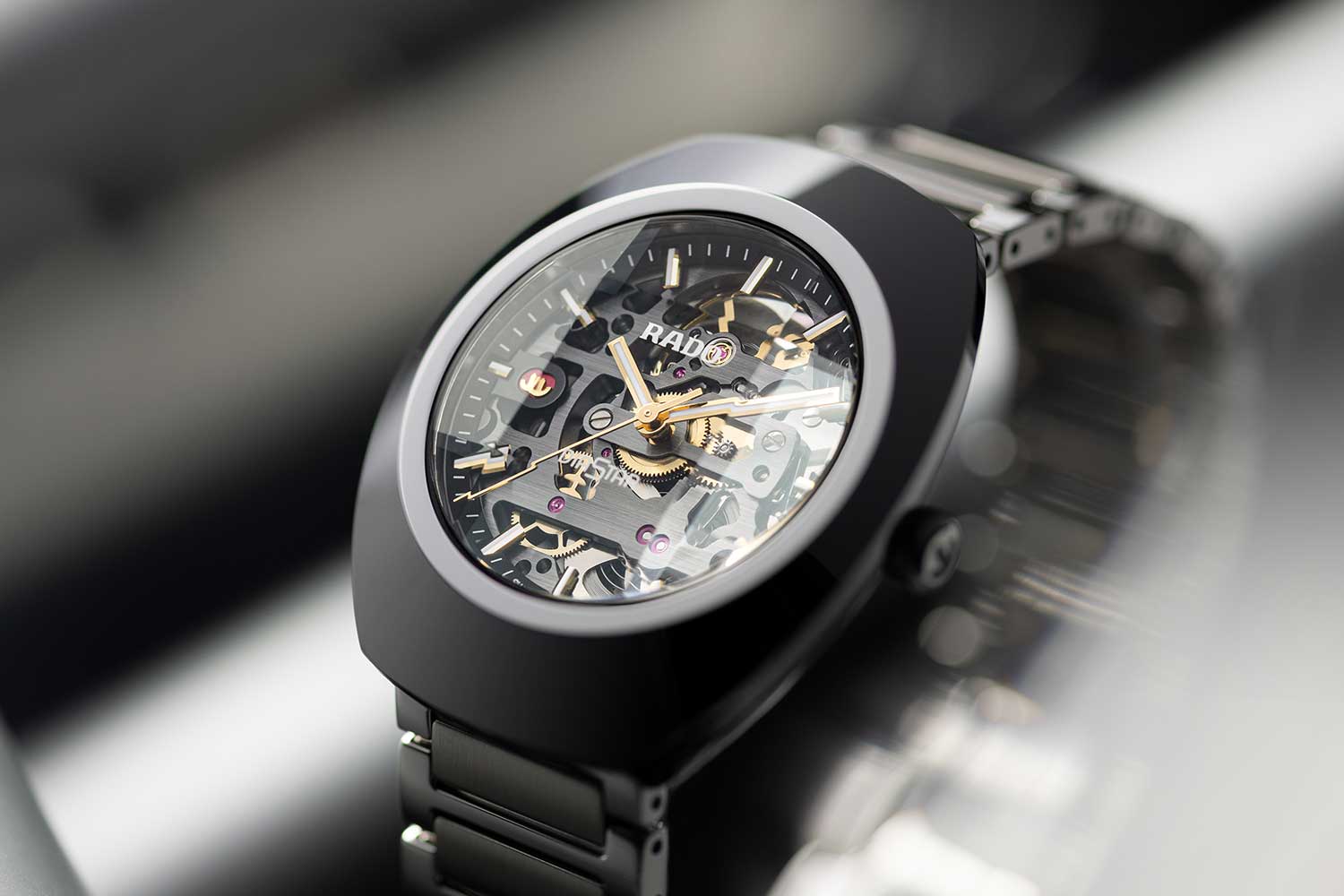
Rado Diastar Original Skeleton
As thrilling as I’m sure this all is, when Rado decided to make a watch out of this stuff, the brand ran into a problem. Thanks to the material’s properties, it wasn’t exactly easy to work with and therefore had to be pressed into blanks and then painstakingly machined, component by component. A rapid-fire production method like injection molding was decades off, and so while Rado was eventually able to cajole Sintra into something luxurious in appearance, it was a long and taxing road.
The breakthrough came in 2011. Rado finally figured out how to inject Sintra. Suddenly, a whole new world of case shapes and production volumes was within reach. Unsurprisingly, Rado took advantage of this new tech and released it to the world as soon as it was possible.
The first model to utilize Ceramos was the D-Star. While apparently basic, the D-Star’s sleek lines would have been difficult to achieve with machined Sintra. The new forming process opened the possibility for more organically shaped watches. Gone were the squares and rectangles; in were the flowing shapes, ovals, and wilder, challenging silhouettes and jutting surfaces, the likes of which had never before been seen.
In 2023, the injection process is so refined that Rado can create its signature monobloc case from Ceramos. The process is swift, reliable, and highly accurate. And the finish one can achieve on this relatively new alloy is, as you can see from the Rado Diastar Original Skeleton’s “bezel” (the form-defining sheath that sits atop a stainless steel core), truly something to behold.
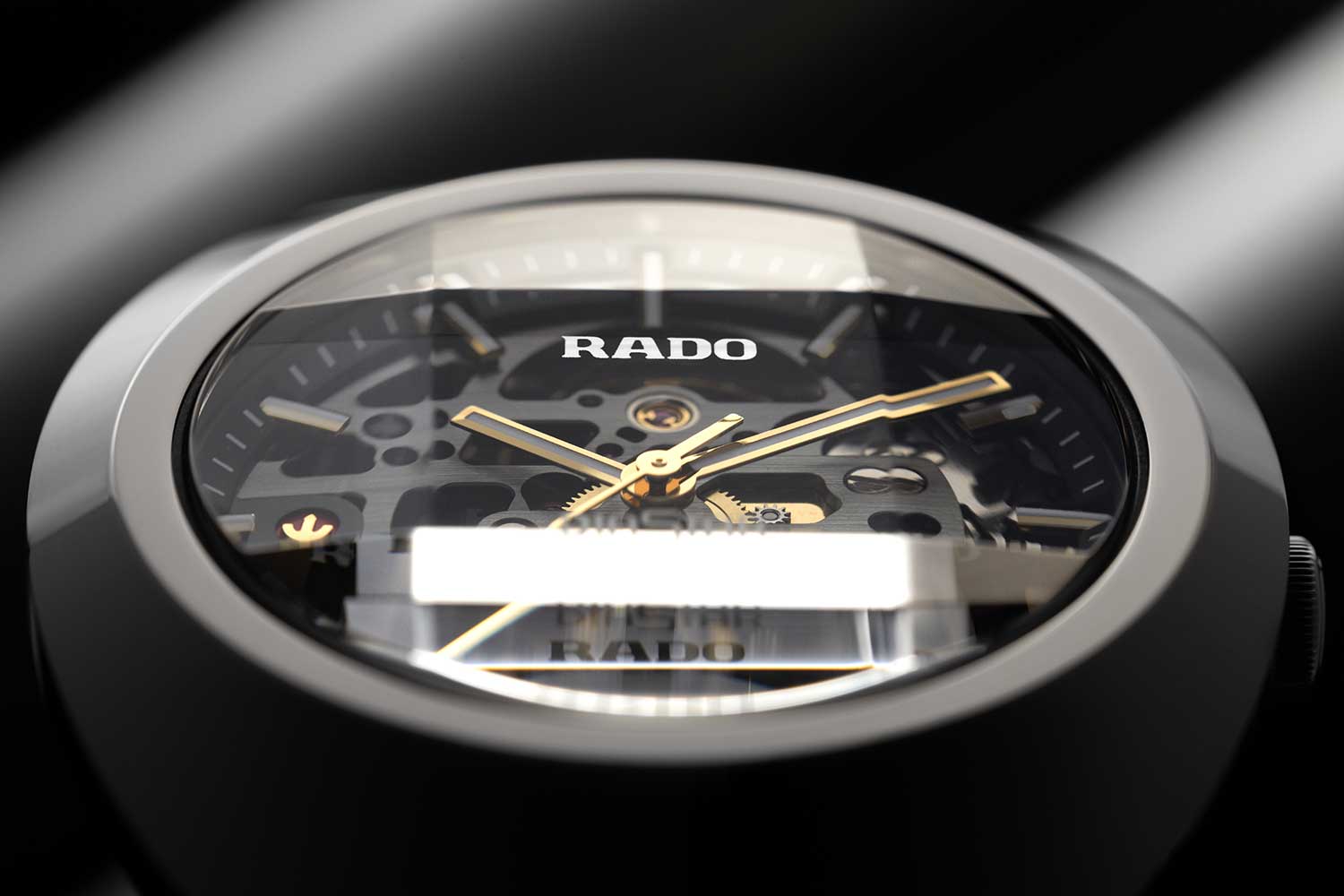
Rado Diastar Original Skeleton
Now, the Rado Diastar Original Skeleton’s case shape would be unusual were it made from steel, made out of an ultra-high-tech material like Ceramos it is downright alien.
The multi-step manufacturing process of this alloy is fraught with finicky stages. One of the biggest problems about using a CERMET alloy is how the different ingredients of said alloy react to finishing. While the ceramic is very hard the metal is much softer. This means getting a uniform finish (which, as you can imagine with such an imposing case shape that is clearly the focal point of the design) is very difficult indeed.
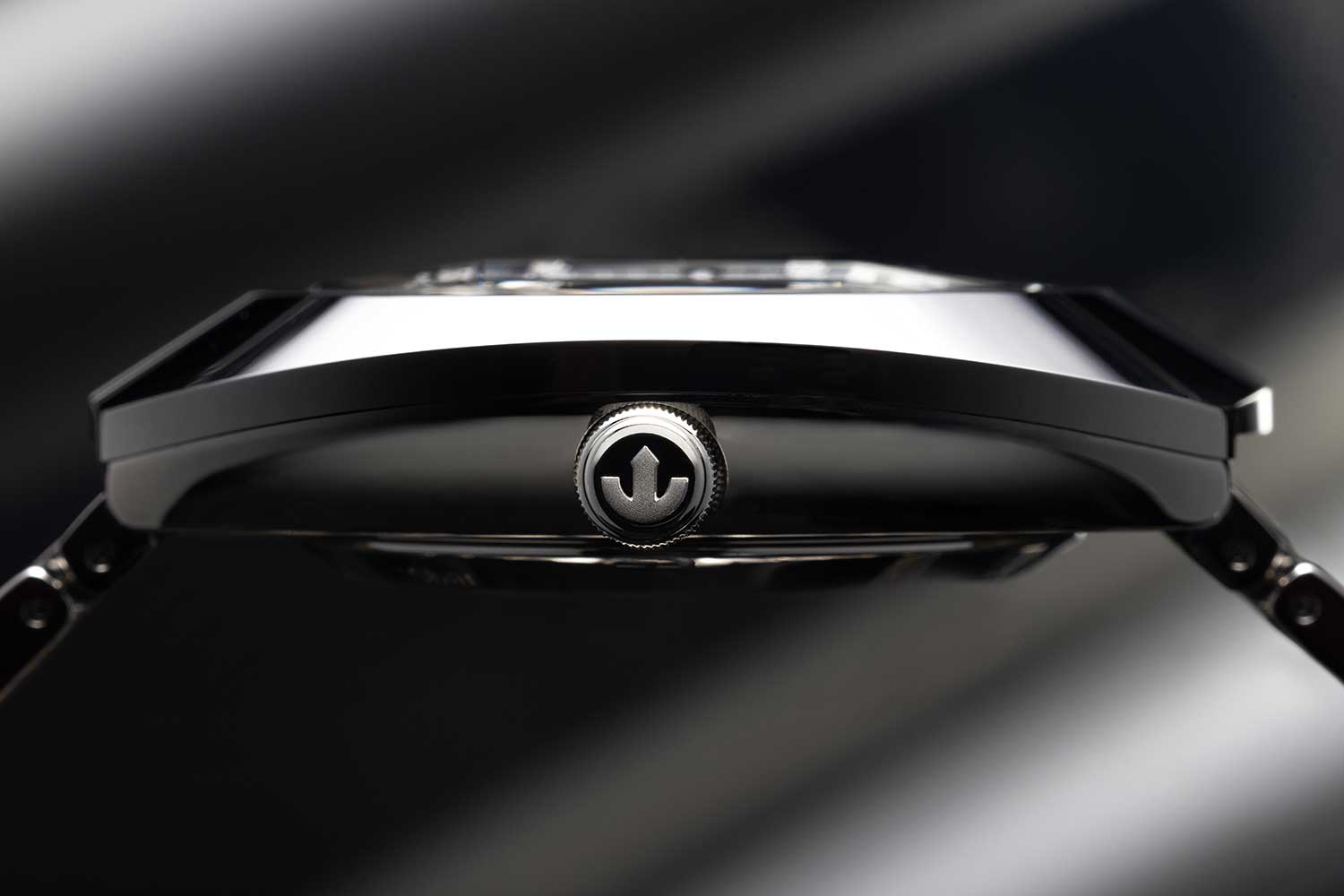
Rado Diastar Original Skeleton
While it is (obviously) possible to achieve a regular surface finish, the process takes longer and required the development and in-house maintenance of expensive machinery. Whether the result is technically or aesthetically interesting enough for watch lovers to care about will become apparent when year-end sales figures are compiled. Ceramos is a fascinating material. But did anybody ask for it?
This is one of the major unanswerable questions facing watch companies whose raison d’être is to innovate. We all hear the mainstream cries for the Rolex GMT Master II “Coke” to make a comeback, for Omega to pursue another Speedy Tuesday collaboration, or for Patek Philippe to make the 5711 in stainless steel, but these aren’t innovations. They are bankable retreads, over which those concerned with the bottom line must surely salivate.
But innovation requires brands to answer questions that have not yet been asked. To innovate, you must be the first among many. It is all about blazing your own trail, rather than following in the footsteps of others. The problem is, it’s never quite possible to tell if a) the trail is going in a direction anyone is willing to travel or b) if your path is even the most efficient or scenic route to a desirable destination.
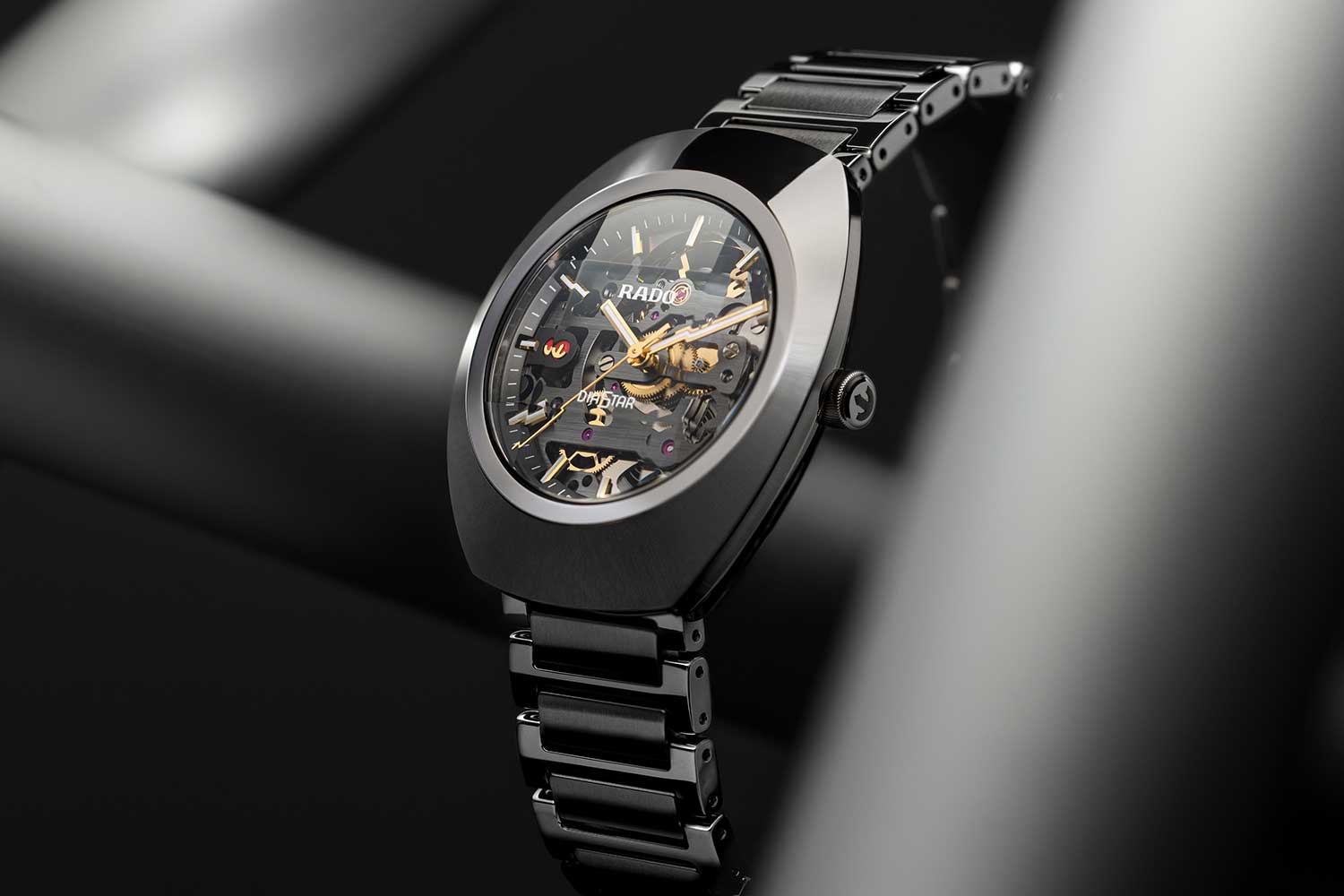
Rado Diastar Original Skeleton
Rado is a thinker and a doer. It has created its own method and stuck to it. You know what the brand is. That, in itself, is a huge selling point. The Rado Diastar Original (powered by a skeletonized and anthracite-colored variant of the R808 movement, boasting an 80-hour power reserve) with its faceted crystal and open-work dial is unlike anything else out there. It is, in many ways, an example of what the entry-level Swatch Group brands do best: they create crazy pieces in non-standard shapes and non-standard materials to test the water. It will be fascinating to discover if Diastar enjoys a full-blooded renaissance once more, this time with the help of ultra-high-tech material.
Rado Diastar Original SkeletonMovement: Automatic Rado
Functions: Time only
Cases: 38mm x 45mm x 11.9mm Ceramos “bezel” with a stainless steel core, 100m water resistance
Dial: Skeletonized
Strap: Polished and brushed stainless steel
Price: USD 2,050

